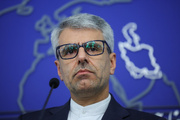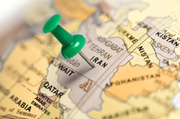Ten-Day Fajr (Ten-Day Dawn), starts on February 1, ten days before the victory of the Islamic Revolution, marking the return of the late founder of the Islamic Revolution Ayatollah Ruhollah Khomeini to Iran.
On February 1, 1979, Ayatollah Ruhollah Khomeini, the late founder of the Islamic Revolution returned to Iran after 15 years in exile.
Ayatollah Sayyed Ruhullah Mousavi Khomeini was a Muslim cleric and Marja, and the political leader of the 1979 Islamic Revolution of Iran which overthrew Mohammad Reza Pahlavi, the last Shah (king) of Iran.
Imam Khomeini was considered a Marja-e taqlid to many Muslims, and in Iran was officially addressed as Imam rather than Grand Ayatollah; his supporters adhered to this convention. Imam Khomeini was also a highly influential and innovative Islamic political theorist, most noted for his development of the theory of velayat-e faqih, the "guardianship of the jurisconsult."

Imam Khomeini spent over 14 years in exile, mostly in the holy city of Najaf in Iraq. Initially, he was sent to Turkey on 4 November 1964, where he stayed in the city of Bursa for less than a year. He was hosted by a Turkish Colonel named Ali Cetiner in his own residence.
Later in October 1965, he was allowed to move to Najaf, Iraq, where he stayed until being forced to leave in 1978 after then-Vice President Saddam Hussein forced him out. Then he went to Neauphle le Château in France.
In early 1970 Imam Khomeini gave a lecture series in Najaf on Islamic Government which later was published as a book titled variously Islamic Government or Guardianship of the Islamic Jurists (velayat-e faqih). This was his most famous and influential work and laid out his ideas on governance at that time.
In the meantime, however, Imam Khomeini was careful not to publicize his ideas for clerical rule outside of his Islamic network of opposition to the Shah which he worked to build and strengthen over the next decade. Cassette's copies of his lectures fiercely denouncing the Shah as, for example, "the Jewish agent, the American snake whose head must be smashed with a stone," became common items on the markets of Iran, and helped to demythologize the power and dignity of the Shah and his reign.
As protest grew, so did Imam Khomeini’s profile and importance. During the last few months of his exile, Imam Khomeini received a constant stream of reporters, supporters, and notables, eager to hear the spiritual leader of the revolution.

Only two weeks after the Shah fled Iran on January 16, 1979, Imam Khomeini returned to Iran triumphantly, on Thursday, February 1, 1979, invited by the anti-Shah revolution which was already in progress. Conservative estimates put the welcoming crowd of Iranians at least three million.
It was originally planned that Ayatollah Khomeini would enter Iran on 26 January, but Prime Minister Shapour Bakhtiar announced that the airports would be closed. From Paris Khomeini declared that he would return as soon as the airports were reopened. The closure of the airports led to widespread protests and strikes. In Tehran alone, 28 people were killed. On 29 January, the airport was reopened.
Upon his arrival to the country, Imam Khomeini was welcomed by millions of Iranians.
Imam Khomeini’s arrival intensified months of popular protests against the Pahlavi regime. On February 8, 1979, a group of commanders, pilots, and staff of the Air Forces (Homafaran) went to Imam Khomeini’s home and expressed their loyalty to the revolution.
On February 11, 1979, the commanders of the armed forces attended Imam Khomeini’s home and submitted their resignation, declaring support to the founder of the Islamic Revolution. After the armed forces declared neutrality, the regime’s main institutions and all other remnants collapsed.
Following the developments, Shapour Bakhtiar quickly fled Iran for France. These influential events marked the end of 2500 years of monarchy in the country. Imam Khomeini called on the people to restore peace and order.

Now, 45 years after the victory of the Islamic Revolution, millions of Iranians from all walks of life take to the streets across the country to celebrate the anniversary of the great event.
Each year on the 22nd day of the month of Bahman on the Persian calendar (11th of February), Iranians turn out in ceremonies attended by high-ranking officials to renew their allegiance to the Islamic establishment and Imam Khomeini, the late founder of the Islamic Republic.

45 years after the victory of the Islamic Revolution, yet the impressive notions and ideologies of Imam Khomeini are a role model for all freedom-seeking nations and independent Muslim countries in the world.
MNA
























Your Comment